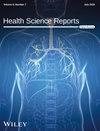Trigger Factors of Primary Cerebral Hemorrhage Onset: A Case-Crossover Study
Abstract
Background and Aims
Compared to traditional chronic risk factors, our understanding of trigger factors for cerebral hemorrhage (ICH) remains relatively primitive. This study aims to identify common trigger factors associated with ICH onset and investigate their diurnal variations in exposure patterns.
Methods
The study population comprised patients with first-ever primary ICH in Chongqing, Southwest China from January 1, 2024 to December 31, 2024. This is a case-crossover study, and we compared each patient's exposure during case periods with their own control periods. Through comparative analysis between trigger periods and stable periods, we identified potential trigger factors and further examined diurnal exposure differences between daytime and nighttime.
Results
The study included 1088 ICH patients (mean age 59.6 ± 16.1 years; 632 males [58.1%]). Significant triggers included Valsalva maneuvers (OR 3.05, 95% CI: 2.43–3.83, p < 0.001), strenuous exercise (OR 4.38, 95% CI: 3.53–5.45, p < 0.001), sudden change of position (OR 3.34, 95% CI: 2.65–4.21, p < 0.001), temperature change (OR 1.98, 95% CI: 1.58–2.47, p < 0.001), and anger intensity (level 3: OR 5.07, 95% CI: 3.65–7.05, p < 0.001; level 4: OR 7.08, 95% CI: 5.08–9.87, p < 0.001). Notably, daytime exposures to both Valsalva maneuvers (OR 1.38, 95% CI: 1.04–1.82, p = 0.024) and strenuous exercise (OR 3.75, 95% CI: 2.72–5.16, p < 0.001) were associated with significantly higher risks compared to nighttime exposures. Conversely, intense anger (level 4) during daytime showed a reduced risk relative to nighttime (OR 0.58, 95% CI: 0.39–0.86, p = 0.008).
Conclusion
We identified several triggering factors associated with ICH onset, some of which exhibited distinct diurnal variations in exposure patterns. These findings provide novel insights into the pathophysiology of cerebrovascular rupture and offer evidence-based references for targeted ICH prevention strategies.


 求助内容:
求助内容: 应助结果提醒方式:
应助结果提醒方式:


